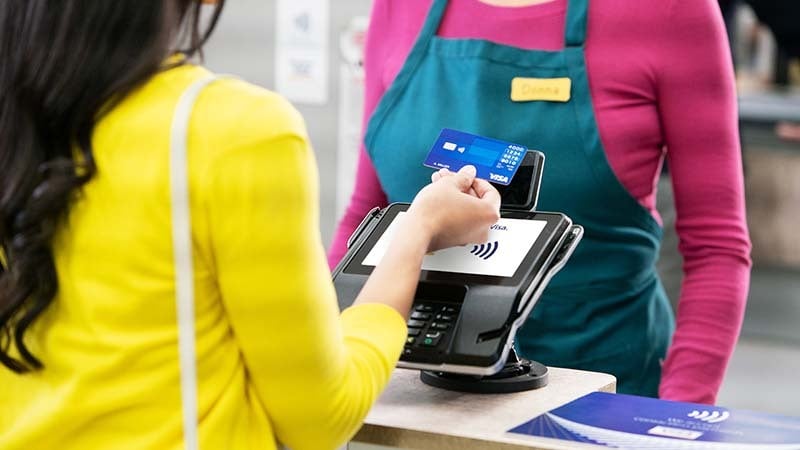Miami, Florida – January 31, 2023. Visa (NYSE: V) today announced that 50% of all face-to-face transactions made with Visa credentials in Latin America and the Caribbean (LAC) were made with contactless technology in December 2022, registering a 43% year-over-year (YoY) penetration growth versus December 2021. Contactless transactions also achieved a significant surge recording a 69% YoY growth, while active contactless credentials also grew 43% versus the previous year.
According to Visa data from December 2022, 14 markets from LAC already achieved a contactless transactions penetration of 50% or more. Among these markets are Chile, where penetration is almost 90%, Guatemala (79%), Panama and Costa Rica (77%), Peru (75%), Bermuda (69%), El Salvador (68%), Paraguay (67%), Colombia (64%), Nicaragua and Belize (61%). These results highlight the rapidly growing demand for Tap to Pay across the region as contactless payments are becoming increasingly popular due to their convenience, security, and incredible speed—all consumers need to do is simply tap their contactless card or device over a payment terminal to pay for things in just seconds.
“This incredible growth we are witnessing in the adoption of contactless payments in the region is testament of how valuable this technology is becoming for consumers and merchants alike, said Ricardo Tafur, Vice President of Consumer Products for Visa Latin America and the Caribbean. “In a world where convenience, immediacy and simplicity have become critical, Tap to Pay is delivering on its promise of helping improve the daily payment experiences of millions of consumers in the region. And at Visa, as a major driver of Tap to Pay worldwide, we are committed to continue expanding this critical technology to other cash-heavy segments in the region to drive innovative solutions even further in support of a truly inclusive digital ecosystem.”
The Visa data also revealed that prepaid credentials currently register the highest contactless adoption within the portfolio of prepaid cards issued in the region, which also highlights the power that contactless technology can bring to drive digital inclusion. In December 2022, 60% of face-to-face prepaid transactions were contactless compared to 51% for the debit segment and 49% for credit transactions. With regards to leading consumer categories where contactless is experiencing major growth, the top five market segments with the largest number of contactless transactions in LAC are food and grocery, fuel, restaurants, quick service restaurants and drug stores/pharmacies.
Driving new use cases
Visa is actively working to bring the benefits of contactless payments to other key segments such as mass transit, as this sector represents a major opportunity to digitize millions of low-value cash transactions in underserved segments and to massify digital acceptance. In fact, Tap-to-Ride, which allows riders to tap a contactless card or mobile to pay their transport fare, has recorded significant growth over the past years. Visa’s contactless transactions on global transit systems crossed the one billion transaction milestone during fiscal year 2022. And in LAC, Visa’s urban mobility transactions have also grown 66 times in a monthly basis (as of July 2022) with 22 urban mobility projects already live for public buses, metro systems and tolls.
Visa is also at the forefront in the industry in driving other new use cases such as Tap to Phone, which enables small businesses to turn their mobile devices into contactless POS terminals to accept payments. The technology is already available in Brazil, Costa Rica, Guatemala, Peru and Colombia with 280,000 mobiles phones already enabled as terminals and other projects currently in development across the region.
How Visa secures contactless payments
Contactless cards use the same secure technology as EMV Chip and each transaction generates a transaction-specific, one-time code, that is extremely effective in reducing counterfeit fraud. In addition, every Visa transaction is protected by multiple layers of security. To make a payment, the contactless chip card or enabled mobile/wearable device must be placed within approximately 5 cm of the Contactless Symbol located on the checkout terminal in order for the transaction to take place.
The adoption of contactless technology is also critical, as it paves the way for next-generation payment technologies, including wearables and other IoT devices.
-
